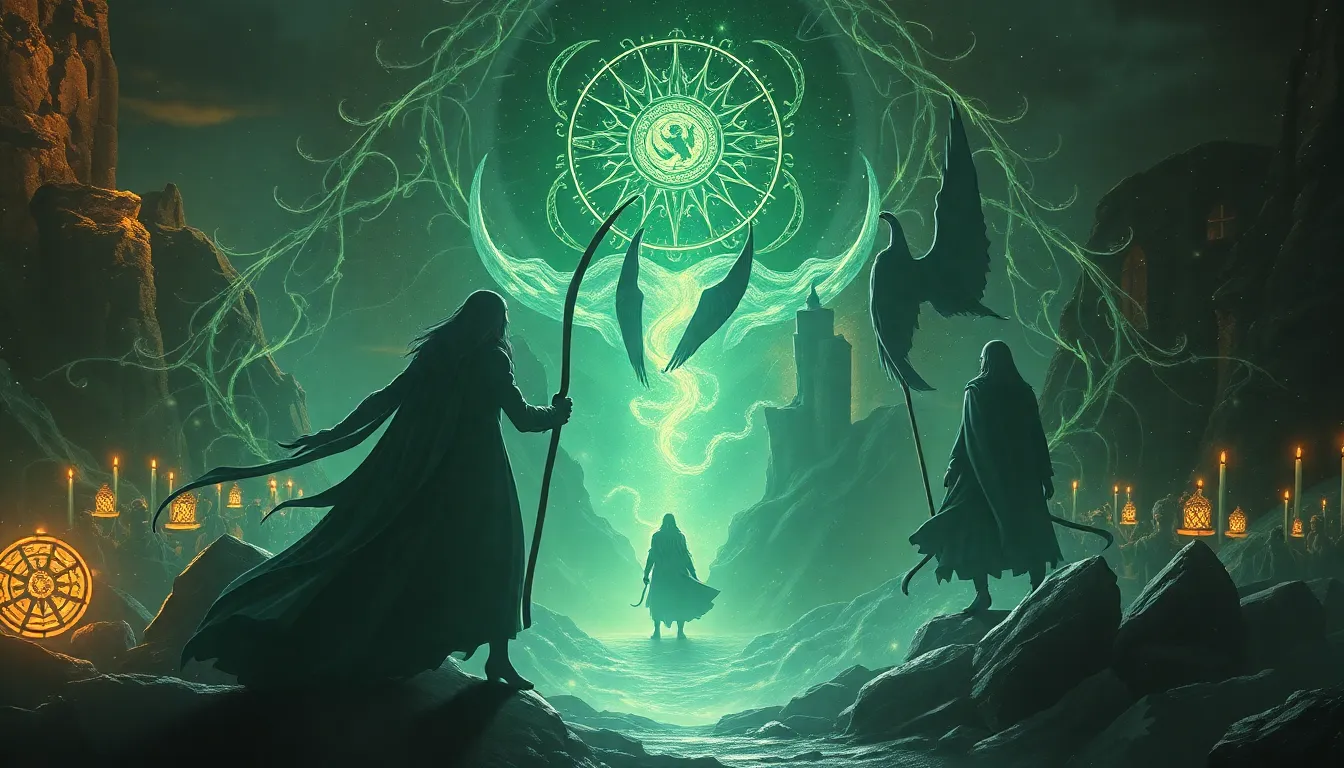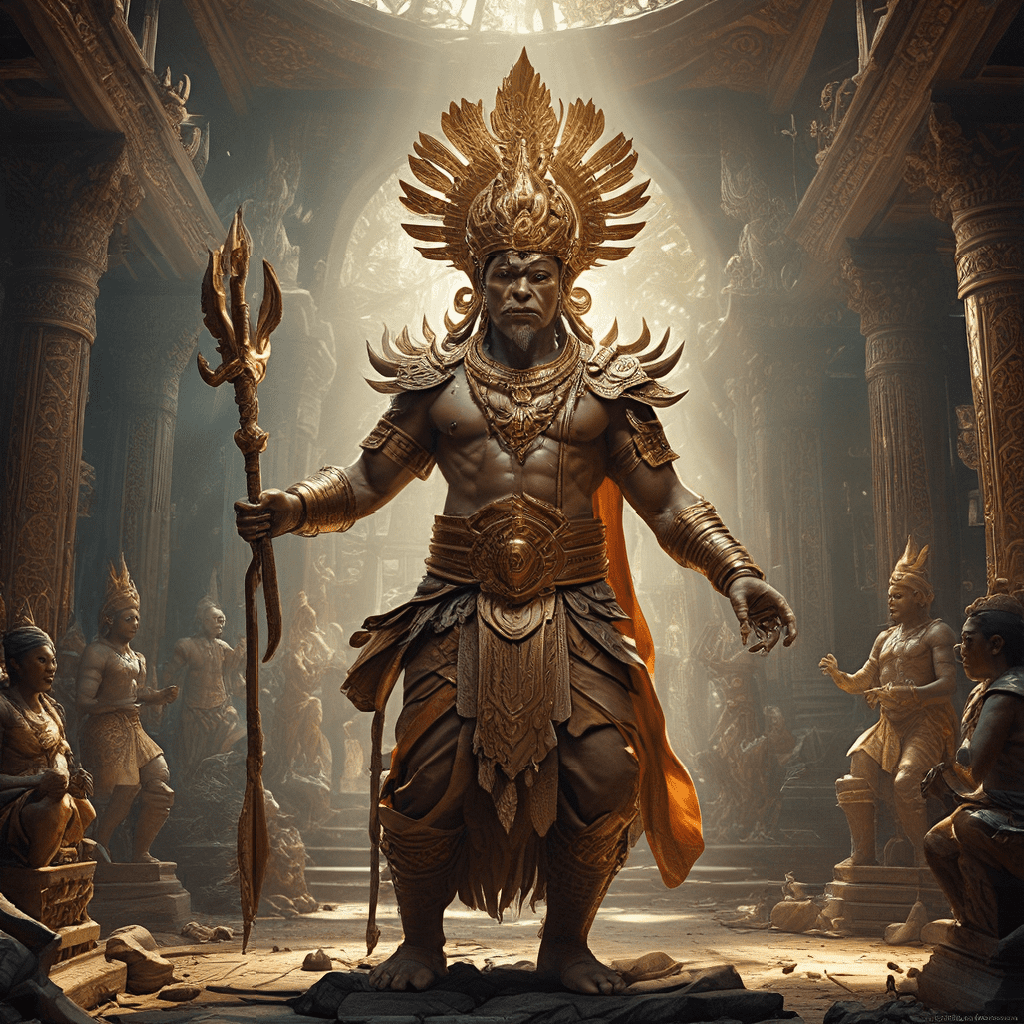The Power of Transformation in Māori Mythology
Māori mythology is rich with tales of transformation and renewal, reflecting the deep connection between humans and the natural world. These stories explore the power of transformation in various forms, from humans changing into animals or spirits, to the cycle of life and death, and the ongoing renewal of the Earth. The themes of transformation and renewal are central to the Māori worldview, shaping their understanding of their place in the universe and their relationship with the ancestors.
The Cycle of Life, Death, and Rebirth
Māori mythology emphasizes the cyclical nature of life, death, and rebirth. This cycle is essential to understanding the role of transformation in Māori culture. It is believed that when a person dies, their spirit, or "wairua", travels to the underworld, Te Reinga, before returning to the world of the living in a new form. This cyclical process reflects the continuous renewal and transformation of nature, such as the changing seasons, the growth of plants, and the birth and death of animals. The idea of rebirth, though not always literal, represents the continuing connection between generations and the enduring nature of life itself.
The Significance of Tāne Mahuta, the God of the Forest
One of the most important figures in Māori mythology is Tāne Mahuta, the god of the forest. Tāne Mahuta represents the power and beauty of nature, and his story highlights the transformative power of creation. According to legend, Tāne Mahuta was born from the union of Ranginui (the sky father) and Papatūānuku (the earth mother). He is credited with separating the sky from the earth, and it is said that he created the forests and the trees, giving life to the natural world. His act of separation is a powerful symbol of transformation, marking the beginning of all life on Earth.
The Role of Spirits and Ancestors in Transformation
In Māori mythology, spirits and ancestors play a crucial role in the process of transformation. The spirit world is believed to be interconnected with the world of the living, and ancestral spirits can guide and influence the lives of their descendants. They can also appear in different forms, either as animals, plants, or even as natural phenomena like weather patterns. These transformations are not just physical alterations but also represent a transfer of knowledge, wisdom, and power from the ancestors to their descendants.
The Concept of Whakapapa, the Genealogical Lineage
Whakapapa is a fundamental concept in Māori culture, representing the genealogical lineage that connects all individuals to their ancestors. It is a system of tracing ancestry through generations, encompassing both human and natural elements. Whakapapa highlights the interconnectedness of all living things and emphasizes the role of transformation in the continuity of life. Through whakapapa, individuals are linked to the past and future, reminding them of their responsibility to maintain the balance of nature and honor their ancestors.
The Maori Transformation Myths: From Human to Animal, Nature, and Deity
Māori mythology is filled with stories of transformation that often blur the lines between humans, animals, nature, and deities. These tales illustrate the flexibility and adaptability of the Māori worldview, emphasizing the ongoing interplay between the physical and spiritual realms. One famous example is the story of Maui, a trickster god and cultural hero. In some versions of his legend, he transforms into a bird to escape danger or to gain access to forbidden places. His ability to shapeshift allows him to achieve extraordinary feats, including fishing up the North Island of New Zealand.
Another intriguing myth involves the transformation of a human into a bird. The story of the "Tītī" bird, also known as the "Muttonbird," tells of a young woman who is transformed into a bird after breaking a taboo. This myth serves as a cautionary tale about the consequences of transgressing cultural rules but also demonstrates the interconnectedness of humans and nature. The woman's transformation into a bird suggests that humans are not separate from the natural world but rather a part of it.
These transformations often involve a spiritual aspect, highlighting the role of ancestors and deities in shaping the natural world. A common theme is the embodiment of ancestral spirits in animals and natural phenomena. The Māori belief that ancestors can take on different forms suggests that the spiritual world is constantly interacting with the physical world, influencing events and guiding the lives of their descendants.
The Ritualistic Practices of Transformation and Renewal
Māori culture incorporates rituals and ceremonies designed to invoke transformation and renewal. These practices are closely tied to the cyclical nature of life and death and the belief that humans are connected to the natural world.
One important ritual is the "tangi," a mourning ceremony held after a death. The "tangi" involves wailing, lamenting, and sharing stories of the deceased, helping the spirit of the deceased to transition to the afterlife. The "tangi" is not simply about grief but also serves as a way to reaffirm the connection between the living and the dead, ensuring that the knowledge and wisdom of the ancestors are passed down to future generations.
The "hangi," a traditional cooking method using an underground oven, is another example of a ritual that symbolizes transformation and renewal. The process of burying food underground and allowing it to cook with the heat of the earth represents a metaphorical transformation, symbolizing the cycle of life and death.
The Impact of Transformation Myths on Māori Culture
The myths of transformation and renewal have played a significant role in shaping Māori culture, providing a framework for understanding the world and their place in it. These stories have served as a source of wisdom, guidance, and inspiration for generations of Māori people.
The themes of interconnectedness, respect for the natural world, and the importance of ancestors are central to Māori culture. The stories of transformation remind Māori people that they are part of a larger cycle of life and death, and that they have a responsibility to maintain the balance of nature and honor their ancestors.
The Psychological Aspects of Transformation
The myths of transformation can also be understood from a psychological perspective. They reflect the human experience of change, growth, and the desire to overcome challenges. The stories of transformation provide hope and encouragement, suggesting that even in the face of adversity, individuals can change, grow, and find new paths.
The ability to transform oneself is seen as a powerful tool for overcoming obstacles and achieving goals. The stories of transformation encourage individuals to embrace change and to see challenges as opportunities for growth and renewal.
Modern Interpretations of Transformation in Maori Culture
In contemporary Māori society, the themes of transformation and renewal continue to resonate, finding new expressions in art, literature, and activism. Māori artists often draw inspiration from traditional myths and legends, using them to explore contemporary issues and celebrate their cultural heritage.
The concept of "whakaora," meaning "to heal," is a contemporary example of how the themes of transformation and renewal are being used to promote well-being. "Whakaora" is a holistic approach to health that emphasizes the interconnectedness of the mind, body, and spirit, drawing upon traditional Māori knowledge and practices to promote healing and empowerment.
FAQ
What is the significance of transformation in Māori mythology?
Transformation is a central theme in Māori mythology, representing the ongoing cycle of life, death, and rebirth, the interconnectedness of humans and nature, and the power of ancestral spirits.
What are some examples of transformation myths in Māori culture?
Some examples include the story of Maui, the trickster god who transforms into a bird, and the legend of the "Tītī" bird, which tells of a woman who transforms into a bird.
How do these myths connect to contemporary Māori culture?
The themes of transformation and renewal continue to be relevant in modern Māori society, shaping art, literature, and activism, and influencing the concept of "whakaora," a holistic approach to health and well-being.



